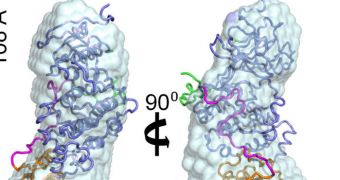A group of investigators at the Brown University reveal in the November 6 issue of the top journal Nature Chemical Biology the exact structure of a critical enzyme complex. Knowing this molecular structure could lead to the development of new drugs against a wide range of conditions.
Some of these conditions include cancer and Alzheimer’s, say investigators from the National Institutes of Health (NIH), who were also a part of the new investigation. The new achievement was possible because the team used an unusual combination of research techniques for the study.
These included nuclear magnetic resonance (NMR) spectroscopy and small-angle X-ray scattering observations, conducted at the Brookhaven National Laboratory's (BNL) National Synchrotron Light Source (NSLS).
“These results provide novel insights into the molecular interactions that regulate the strength and duration of MAP kinase signaling and, in turn, provide novel avenues for therapeutic interventions of MAP kinase-related diseases,” the team concludes in its journal entry.

 14 DAY TRIAL //
14 DAY TRIAL //